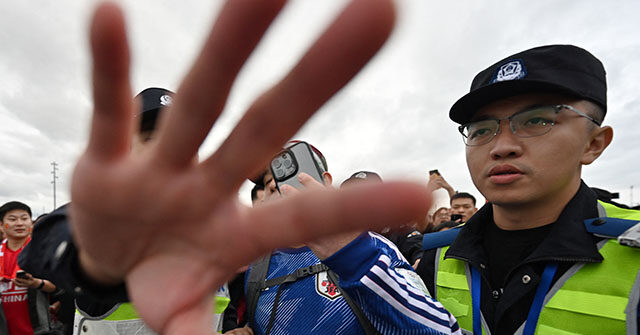On a Tuesday morning in Changde, China, an unexpected and alarming incident unfolded when a man drove his SUV into a crowd of students and pedestrians outside Yong’an Elementary School. The attack occurred around 8:00 a.m., coinciding with the arrival of students for the start of their school day. Despite numerous injuries reported, the local authorities stated that there were no fatalities linked to the incident. The unnamed 39-year-old male driver, known only by his surname “Hung,” was taken into custody following an altercation where enraged parents and school guards forcibly removed him from his vehicle, displaying their anger through physical confrontation. While details surrounding the motives of the driver remain unclear, the incident is part of a questionable pattern as it marks the third mass-casualty vehicle attack in China within just seven days.
The chaotic scene immediately following the incident showcased the raw emotions and fears among the local community. Witnesses described the swift arrival of ambulances, which tended to the injuries sustained by about a dozen victims, some of whom required hospitalization. Eyewitness accounts highlighted the desperate actions of parents, with reports of several of them attempting to apprehend the driver. Local media captured images of the aftermath, with injured individuals and frightened students scattered about, contributing to a growing sense of unease reflected on Chinese social media platforms. As with previous incidents of violence, state censors quickly moved to regulate the narrative online, aiming to contain the discussion around this event as it echoed distressing recent attacks.
Discussions on social media have revealed a rising concern about individuals resorting to violent acts as a form of retribution against society. Observers have expressed alarm over the increasing prevalence of such indiscriminate violence; police records cited an alarming rise, with 19 reported incidents leading to 63 fatalities and 166 injuries this year alone. The troubling trend raises critical questions about societal pressures, mental health, and the apparent lack of outlets for personal grievances. One user poignantly captured the general sentiment when asking about the escalation of such tragic occurrences, particularly those involving children, highlighting a collective anxiety about the changing social landscape in China.
Experts are digging deeper to understand the root causes of such violence and the frustrations that might motivate individuals to lash out. Lynette Ong from the University of Toronto emphasized the societal discontent brewing among the populace, suggesting that many individuals feel trapped in their circumstances. The act of resorting to violence becomes an alarming choice as frustrations fester. Another academic, Hanzhang Liu from Pitzer College, echoed this sentiment, pointing toward solidifying hardships that many people are facing. Their observations articulate a worrying trend, suggesting that the mental health crisis in China, characterized by unaddressed grievances, is spiraling towards more extreme expressions of frustration.
A significant contributing factor to the situation is the lack of available outlets for individuals to voice their discontent or seek help for their mental health struggles. Fudan University professor Qu Weigo raises concerns over the limited public channels for expressing anger or frustration openly. The fear of retaliation from state authorities creates a climate in which individuals with grievances are often silenced. Experts argue that establishing social safety nets and providing psychological counseling could be pivotal in reducing such incidents. Qu’s suggestions indicate a need for initiating open dialogues about power and societal grievances, although such discussions often face censorship in contemporary China.
The recurring nature of these violent incidents suggests that they may become alarmingly common if not addressed proactively. The Changde incident highlights deeper societal issues concerning individual experiences of isolation, frustration, and desperation. As citizens’ grievances remain unaddressed and tension builds up, the potential for more attacks looms. Without broader recognition of the factors contributing to mental distress and without mechanisms to empower individuals to express their grievances safely, the pattern of mass-casualty attacks could tragically continue, raising critical questions about the state of societal health in China and the mechanisms needed for change.

